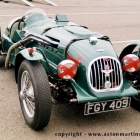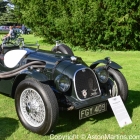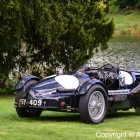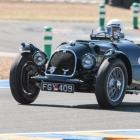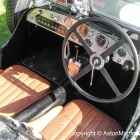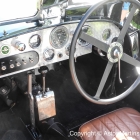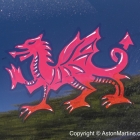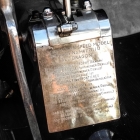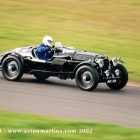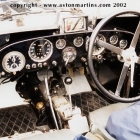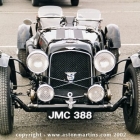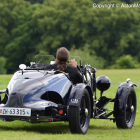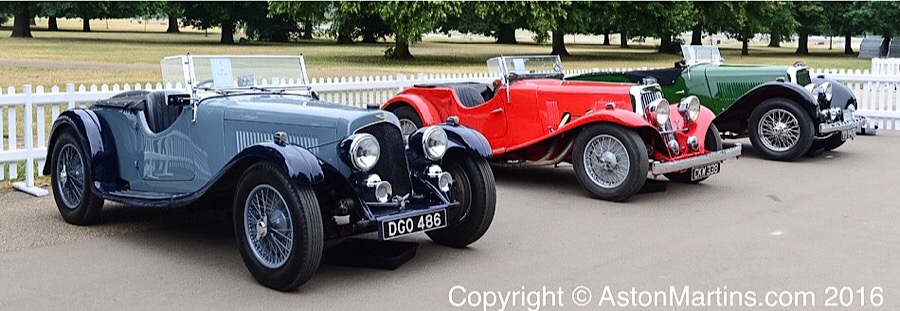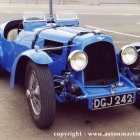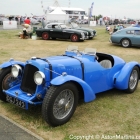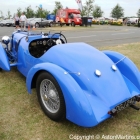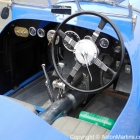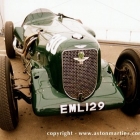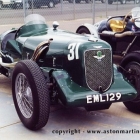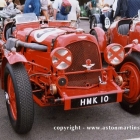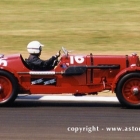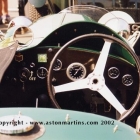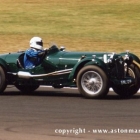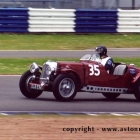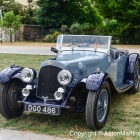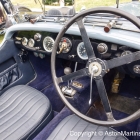The performance of the 1936 Team Cars privately entered in the 24 hour race at Spa, Belgium must have encouraged another two people to take cars, both of which were raced in the 1936 RAC Tourist Trophy. These ‘customer cars’ were given seater Ulster style bodies by E Bertelli Ltd.
Red Dragon
Another customer Speed Model was originally built in the experimental shop for Richard Seaman to compete in the 1936 Tourist Trophy. Richard Seaman was probably the best British Driver of the immediate pre-war period and due to this the factory did offer support to him with the race. After running well including the fastest lap for cars in it’s class, the car unfortunately retired with a seized engine due to lack of oil. The car then spent some time being raced on the continent with new owners including the 1937 and 38 Mille Miglia and 1937 Le Mans 24 hour. After returning to the UK after WW2, the car again competed at Le Mans in 1949, 12 years after it’s first appearance at Le Sarthe. This body style, fitted in 1950, was actually a copy of the Ferrari 166S that the owner, Dudley Folland also tried to import into the UK. As the import duties after the war were so steep, the Ferrari remained in Italy and the pre-war body on the Speed Model was replaced by this on trend Ferrari style coachwork the car still carries today. Dudley Folland used the ‘red dragon’ symbol on his race cars and the name stuck. The car is still a regular competitor in AMOC events.
A further two chassis which were finished as two seaters by Abbey Coachworks were really quite sporting in appearance if a little dated for their time. Below is a car known as the Bond Williams car, DGJ242 has had the body converted to the style of the Ulster. The Abbey bodied cars are known as ‘Type B’ Speed Models.
The Black Car
By the close of the 1936 Motor Show when the Speed Model was first shown (at a price of £695 chassis only), 20 odd remained unsold and only two found buyers. The car featured above, which became known as the Black Car, was ordered by R.S. Wilkins and fitted with an Ulster style body found lying unused at the works. After appearances at Brooklands during 1937, it passed into the hands of ‘Jock’ St John Horsfall who prepared and tuned it for the 1938 season.
One of his greatest drives in this car was a 2nd place behind a 3 litre Delage (and 1st in class) in the 1938 RAC Tourist Trophy at Donnington against stiff competition from BMW 328’s, where Jock was fortunate to receive considerable support from the factory. After the war, Jock raced the Black Car to a famous victory in the 1946 Belgian Grand Prix. Following his tragic death later in 1949 at the wheel of an ERA at Silverstone, the Aston Martin Owners Club commemorates his life with it’s biggest race meeting of the year – The St John Horsfall.
The Black Car was kept by the family and was finally restored into it’s original form finally to appear at the AMOC Horsfall meeting in 1993. This car, although never a team car, has become one of the most famous Aston Martins ever built.
This Speed Model, was originally a Type A 2/4 seater used as a works demonstrator. After the war, it was converted to a Formula B car by St. John Horsfall and then again in 1949 to sports specification. In this form, with Horsfall driving single handed, it achieved a notable 4th place in the 1949 Spa 24 hour race (and thus is now known as the Spa Special) It has been successfully ever since and is often seen at AMOC race meetings in the UK.
With all the various body styles applied to Pre-war Aston Martins, it can be very difficult to identify the various models. Indeed, without the AMOC register of cars, I would find this task almost impossible. But here is a little tip that can sort the 2 litre cars from the 1½ examples. The 2 litre cars had the ports reversed which improved efficiency and thus their exhaust manifolds exit the bonnet on the right side. All 1½ litre cars exit the bonnet on the left side.




